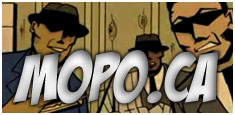Halloween is coming up soon and what better time to talk about superstitions than a holiday focused on spirits and symbolism. Whether you’re superstitious or not, discovering the origins of these common beliefs is a fascinating look at religion and human psychology. So enjoy!
Category: Weird
Money Trees
Apparently in several wooded areas around the UK, passersby have been stopping for decades (if not centuries), meticulously hammering small denomination coins intro trees. Most of the trees seem to be in and around Cumbria and Portmeirion, and I didn’t find a single example of a tree like this located outside the UK. According to this recent article by the BBC, the practice might date back to the early 1700s in Scotland where ill people stuck florins into trees with the idea that the tree would take away their sickness.
Grim Reaper Creature Reacher Adult Halloween Costume
Death has a long reach, as you will surely find out with this costume. The Grim Reaper Creature Reacher Adult Costume includes: a detailed deluxe latex skeleton mask with hood, foam latex skeletal hand/arm extensions and a black robe.
Kids Create Bellagio-style Water Show in Pool
Retro Shirt – Vegas Baby Vegas Adult Costume
Classically cool, the Retro Vegas Baby Vegas Bowling-style shirt is red with black accents. It features a button-front, contrast trim piping and collar, a front pocket, a “Vegas, Baby, Vegas” logo screen-print on the back, and 50’s-style pleated back vents.
Does It Really Take More Muscles To Frown Than To Smile?
While the origins of the phrase is unknown, one thing is certain. It isn’t rooted in science. It actually takes more muscles to smile than to frown. While it’s difficult to determine exactly how many muscles are involved in smiling or frowning — not everyone smiles the same way and uses different types of smiles depending on context — the bare minimum required for a smile is 10 muscles. For a minimal frown, only six muscles are used.
According to Dr. David Song of the University of Chicago Medical Center who recently did a study on the topic, the average frown requires 11 muscles while an average smile requires 12. However, his method of counting the number of muscles used in creating a facial expression does not take into account other variables like energy used by each muscle or the individual variability in a person’s facial muscles. While humans share facial muscles to express emotions, some have more muscles in their face and may use more of them when smiling or frowning.



 Click here for more information…
Click here for more information… Click here for more information…
Click here for more information…
